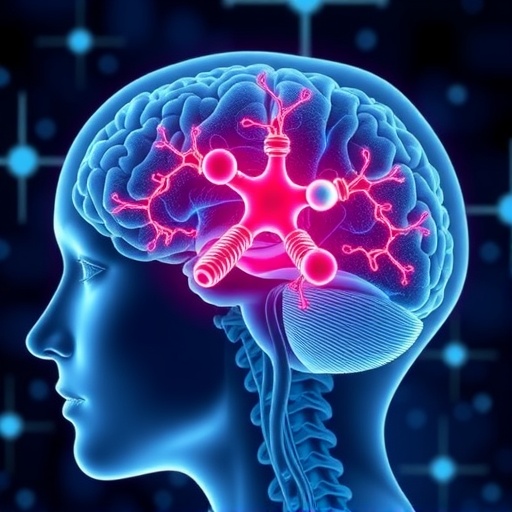Spinal muscular atrophy (SMA) has long been characterized primarily as a devastating motor neuron disease, marked by the progressive loss of voluntary muscle strength beginning in infancy or early childhood. Clinicians have documented patients struggling with muscle weakness, respiratory difficulties, and impaired swallowing functions. While breakthrough medical therapies have emerged to slow down SMA progression, they have not yet fully addressed the persistent motor disabilities or the recently observed cognitive and social challenges that increasingly manifest in patients. This paradigm shift in SMA understanding heralds a new frontier in neuroscience research, focusing beyond motor neurons to broader neural systems.
Recent pioneering work led by researchers at Leipzig University’s Carl Ludwig Institute of Physiology has shed transformative light on the neurobiology of SMA, implicating the cerebellum as a significant neuropathological contributor to the disease’s phenotypic spectrum. This discovery contrasts with the traditional SMA framework that exclusively centered motor neuron degeneration as the underlying cause of clinical symptoms. Instead, these findings suggest that cerebellar dysfunction independently drives a subset of SMA features, thereby providing a more comprehensive explanation for refractory motor deficits and the emergence of social and cognitive impairments that patients experience despite advances in motor neuron-targeting therapies.
The cerebellum, traditionally recognized as a critical center for motor coordination and balance, comprises diverse neuronal populations including Purkinje cells, which serve as the principal output neurons modulating cerebellar circuitry. In SMA, researchers report pronounced damage to these Purkinje cells, precipitated by the activation of a maladaptive intracellular signaling cascade that triggers apoptotic cell death. Through meticulous histological analyses and advanced molecular techniques, the Leipzig team demonstrated that Purkinje cell loss significantly disrupts cerebellar network integrity, exacerbating motor dysfunction beyond what is attributable to spinal motor neuron degeneration alone.
This pathophysiological insight was corroborated using genetically engineered mouse models that recapitulate severe SMA phenotypes. Behavioral assays revealed that these SMA mice displayed profound motor impairments typical of the disease, alongside a striking reduction in ultrasonic vocalizations — an ethologically relevant measure of murine social communication. The parallel manifestation of motor and social deficits underscores the cerebellum’s multifaceted role in integrating motor control with higher-order social behavior, a nexus previously underappreciated in SMA research.
In a remarkable demonstration of targeted molecular intervention, the researchers employed viral vector-mediated gene therapy to restore the deficient survival motor neuron protein specifically within Purkinje cells. This cell-selective approach yielded partial yet measurable improvements in motor coordination and social communication, affirming the causative role of cerebellar pathology in SMA symptomology. Such precision-targeted rescue experiments provide invaluable proof-of-concept that therapeutic strategies addressing cerebellar deficits can complement existing motor neuron-focused treatments.
To achieve these groundbreaking findings, the research team combined state-of-the-art methodologies: high-resolution confocal imaging allowed detailed visualization of cerebellar microcircuit alterations, while patch-clamp electrophysiology recordings assessed functional neuronal impairments in cerebellar slices ex vivo. Furthermore, genetic tools enabled mis- or restored expression of disease-relevant proteins, exemplifying a robust multidisciplinary approach integrating neuroanatomy, physiology, and gene therapy technologies.
This study was notably advanced through collaborative efforts involving prominent research institutions including Columbia University, Johns Hopkins University, and Ulm University. Such international partnerships facilitated knowledge exchange and technical expertise pivotal for the successful execution of these complex investigations. Importantly, three of the four primary study authors are medical students engaged in doctoral research, highlighting the integration of emerging scientists into cutting-edge translational neuroscience endeavors.
Looking ahead, these compelling insights provide a clear directive for future SMA research: comprehensive clinical investigations are warranted to assess cerebellar involvement in larger patient cohorts. Systematic neuroimaging and neuropathological studies could elucidate the extent to which cerebellar degeneration correlates with clinical heterogeneity in SMA. Additionally, preclinical trials are planned to evaluate whether already approved motor neuron therapies exert any modulatory effects on cerebellar dysfunction and associated behavioral phenotypes in animal models.
This evolving evidence base invites a broader conceptualization of SMA as a multisystem neurodevelopmental disorder rather than an isolated motor neuronopathy. Recognizing cerebellar pathology as an independent driver of SMA symptoms opens novel therapeutic avenues aimed at preserving cerebellar circuitry, potentially augmenting patient outcomes beyond the current state of care. It reinforces the imperative for integrated treatment strategies that target complex neural networks affected in SMA, thereby offering renewed hope for improving quality of life in affected individuals.
In summary, the recent work from Leipzig University catalyzes a paradigm shift in SMA pathophysiology, emphasizing the cerebellum’s crucial role in disease progression. By delineating mechanistic links between Purkinje cell degeneration and both motor and social deficits, this research not only deepens our understanding of SMA’s neurobiological underpinnings but also charts a path toward innovative and more holistic therapeutic interventions.
Subject of Research: People
Article Title: Cerebellar pathology contributes to neurodevelopmental deficits in spinal muscular atrophy
News Publication Date: 12-Sep-2025
Web References: http://dx.doi.org/10.1093/brain/awaf336
Image Credits: Dr. Christian Simon
Keywords: spinal muscular atrophy, cerebellum, Purkinje cells, neurodevelopmental deficits, motor impairments, social communication, gene therapy, neuronal cell death, motor neuron disease, electrophysiology, neurodegeneration, mouse model




